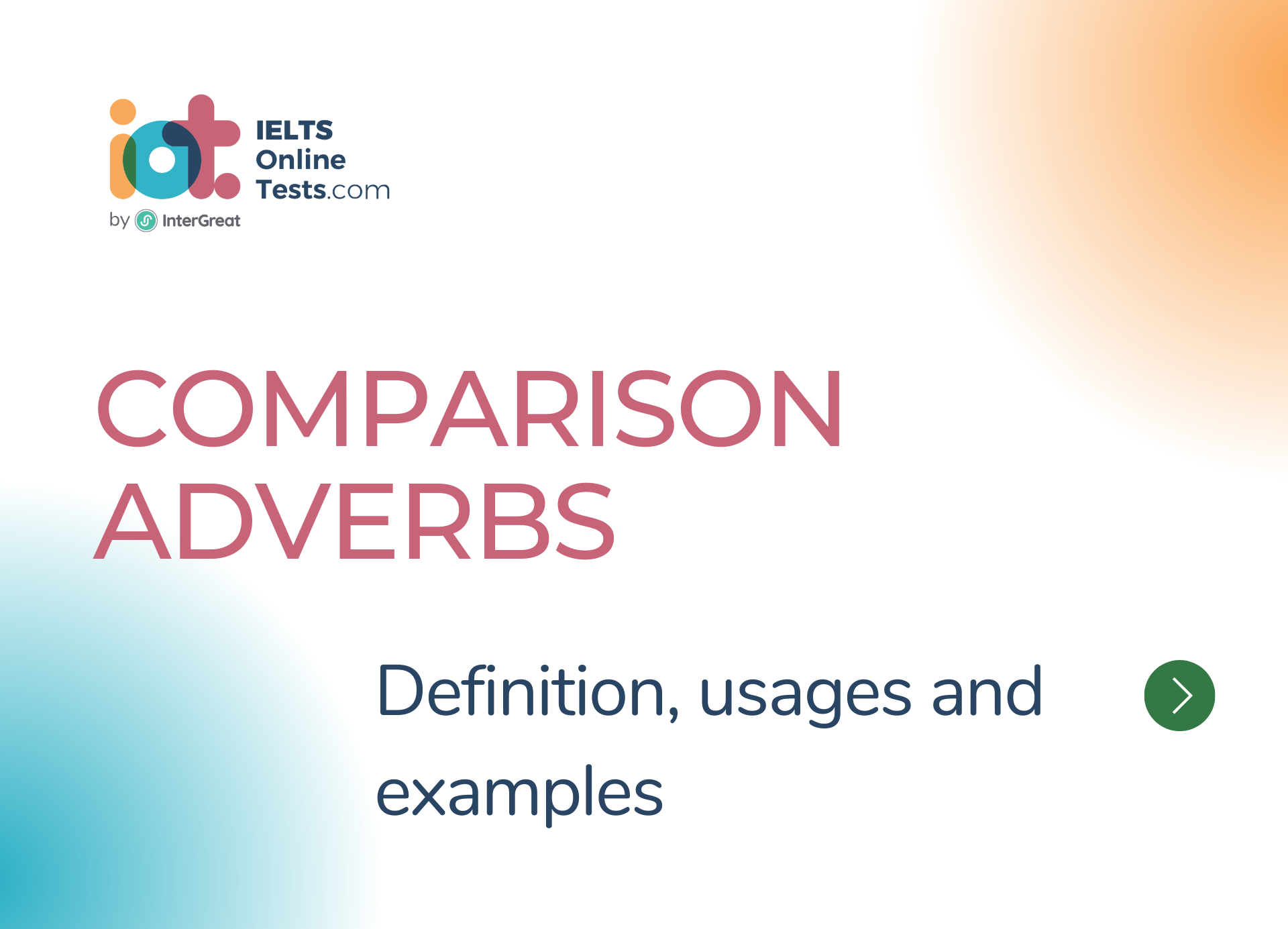
Comparison adverbs
Comparison adverbs, also known as adverbs of comparison, are used to compare the intensity or degree of an action or quality between two or more things. They modify verbs, adjectives, or other adverbs to indicate a higher or lower level of the described attribute.
Here are some key points about comparison adverbs:
Comparative Form: Comparison adverbs have a comparative form used to compare two actions or qualities. Most adverbs form the comparative by adding "more" before the adverb.
- Example:
- "She runs more quickly than him,"
- "He speaks more fluently now."
- Example:
Superlative Form: Comparison adverbs also have a superlative form used to compare three or more actions or qualities. Most adverbs form the superlative by adding "most" before the adverb.
- Example:
- "She runs the most quickly of all the athletes,"
- "He speaks the most fluently in the group."
- Example:
Irregular Forms: Some adverbs have irregular comparative and superlative forms that don't follow the standard rules. For example:
- Adverb: well, Comparative: better, Superlative: best
- Adverb: badly, Comparative: worse, Superlative: worst
Use with Adjectives: Comparison adverbs can also be used to compare the degree of a quality described by an adjective.
- Example:
- "She is more beautiful than her sister,"
- "This movie is most interesting."
- Example:
Use with Adverbs: Comparison adverbs can modify other adverbs to compare the degree or intensity of an action or quality.
- Example:
- "He runs more slowly now,"
- "She speaks the most softly of all."
- Example:
Placement: Comparison adverbs are usually placed before the verb, adjective, or adverb they modify.
- Example:
- "He plays the piano more skillfully,"
- "She dresses the most stylishly in the group."
- Example:
Comparison adverbs allow us to express degrees of intensity or quality when comparing different actions, qualities, or circumstances. By using them correctly, we can provide clarity and precision in our language by indicating the relative levels or degrees of the compared elements.




